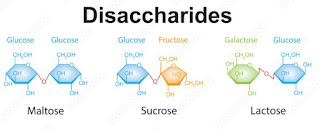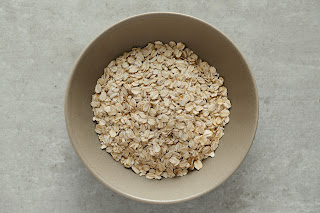What is Carbohydrates?
Carbohydrates are bio-molecules composed of carbon, hydrogen, and oxygen atoms, generally with a hydrogen-oxygen ratio of 2:1. So, the simple formula is like Cm(H2O)n. Where, m is equal or not equal to n. For example glucose, C 6H 12O 6 or Cm(H2O)n, where, m=n=6. Carbohydrates are one of the three main macronutrients crucial for human body, like fats and proteins. They are major energy source and play a significant role in a number of physiological processes.
Picture: Glucose-The simplest carbohydrates, Image by freepik.
Types of Carbohydrate
Types of Carbohydrate
Carbohydrates are classified into different categories according to their chemical structure and nature of their digestion and absorption by the body. The main categories include:
Monosaccharides:
Monosaccharides are the simplest form of carbohydrates and made up of a single sugar molecule. The three most common monosaccharides are glucose, fructose, and galactose. Glucose is the key source of energy for cells and is commonly found in foods like fruits, vegetables, and honey. Fructose available in fruits and sweeteners like high-fructose corn syrup, while galactose is generally bound to glucose to form lactose, the sugar found in milk and dairy products.
Disaccharides:
Disaccharides are composed of two monosaccharide molecules. The most common disaccharides are sucrose, lactose, and maltose. Sucrose, or table sugar, is formed by glucose and fructose and is found in many sweetened food products. Lactose is made up of glucose and galactose and is found in milk and dairy products. Maltose consists of two glucose molecules and is found in grains and malted foods.
Picture: Disaccharides, photo credit: Adobe Stock
Oligosaccharides:
Carbohydrates which are typically consisted of 3-10 monosaccharide units bonded together. For example, Raffinose, a trisaccharide having formula C18H32O16 is formed with three sugar units – fructose, glucose, and galactose. It produces D-galactose and sucrose when it gets hydrolysed with α-galactosidase enzyme. It is found in legumes, beetroots, cabbage, cottonseed, broccoli, etc. Another example is fructooligosaccharides are plant-derived oligosaccharides. They are also termed as oligofructans and are considered to be storage saccharides. These are short chains of fructose residues which are common in plants. Examples include banana, onion, wheat, barley, etc. They are commercially used as food additives to enhance colour and texture, and also as artificial sweeteners.
Polysaccharides:
Polysaccharides are carbohydrates group that comprise long chains of monosaccharide units. They can be further classified into two main categories:
Starch:
The storage form of carbohydrates in plant is starch. It is formed by amylose and amylopectin molecules. Foods rich in starch include grains (such as rice, wheat, and oats), potatoes, and legumes.
Glycogen:
The storage form of carbohydrates in animals is named as gycogen, including humans. It is primarily stored in the liver and muscles and acts as a readily available source of energy. Glycogen is broken down into glucose when energy is needed.
Dietary Fiber:
Dietary fiber is a class of carbohydrate that is not digested by the human body. It provides bulk to the diet and offers various health benefits. There are two common types of dietary fiber:
Picture:healthy-oatmeal-rich in dietary Fiber, Image by Racool_studio on Freepik.
Soluble Fiber:
Soluble fiber dissolves in water and forms a gel-like substance in the digestive tract. It can help lower cholesterol levels and regulate blood sugar levels. Good sources of soluble fiber include oats, legumes, fruits (such as apples and oranges), and some vegetables.
Insoluble Fiber:
Insoluble fiber does not dissolve in water and adds bulk to the stool, promoting regular bowel movements and preventing constipation. Whole grains, vegetables, and the skins of fruits are examples of foods high in insoluble fiber.
Classification of fat according to nature of absoption
Simple Carbohydrate
Simple carbohydrates, also known as simple sugars or fast-acting carbohydrates, are carbohydrates that consist of one or two sugar molecules. They are quickly digested and absorbed by the body, leading to a rapid increase in blood sugar levels. Simple carbohydrates can occur naturally in foods or be added as sweeteners.
Here are some examples of foods that contain simple carbohydrates:
Fruits:
Several fruits contain natural sugars, such as fructose. Examples include bananas, grapes, oranges, and apples.
Refined sugars:
These are sugars that have been processed and stripped of their natural nutrients. Common examples include table sugar (sucrose), brown sugar, and powdered sugar.
Sweetened beverages:
Soft drinks, energy drinks, fruit juices, and other sugary beverages often contain added sugars, contributing to their sweet taste.
Sweets and desserts:
Candy, chocolate, cookies, cakes, pastries, ice cream, and other desserts are typically high in simple carbohydrates due to added sugars and refined flours.
White bread and white rice:
Highly processed grains, such as white bread and white rice, have had the fibrous parts and bran removed, leaving mostly starchy endosperm.
Honey and maple syrup:
These natural sweeteners are often used as alternatives to refined sugars but still consist primarily of simple carbohydrates.
Complex Carbohydrate
Complex carbohydrates are carbohydrates made up with long chains of sugar molecules. They are also referred to as polysaccharides and are generally considered healthier than simple carbohydrates due to their slower digestion and more sustained release of energy. Complex carbohydrates are formed in a variety of foods and offer several health benefits.Here are some examples of foods that contain complex carbohydrates:
Whole grains:
For instance, whole wheat, oats, brown rice, quinoa, barley, and rye are rich in complex carbohydrates. These grains retain their bran, germ, and endosperm, providing fiber, vitamins, minerals, and other nutrients.
Legumes:
The excellent sources of complex carbohydrates are Beans, lentils, chickpeas, and other legumes .They are also rich in dietary fiber, protein, and a variety of minerals.
Vegetables:
Starchy vegetables contain complex carbohydrates. These include sweet potatoes, corn, peas, and winter squash.
Whole fruits:
Generally, fruits are main sources of simple carbohydrates due to their natural sugar content; they also contain complex carbohydrates in the form of fiber. Fruits consuming in their whole, unprocessed form ensures the benefits of fiber and other nutrients.
Whole grain products:
Whole grain bread, whole wheat pasta, whole grain cereals, and other products made from whole grainsdeliver complex carbohydrates. It is significant to choose products that are labeled "100% whole grain" or "whole wheat" to ensure they are not heavily refined.
Function of carbohydrates
Carbohydrates play vital role in maintaining overall health and well-being. Here are some benefits of including carbohydrates in your diet:
Energy Source:
Carbohydrates are the body's major source of energy. When consumed, they are broken down into glucose, which is used by cells as fuel for various bodily functions. Sufficient carbohydrate intake makes sure optimal energy levels for physical activity, brain function, and everyday tasks.
Brain Function:
Glucose derived from carbohydrates is the main source of energy for the brain. The brain relies on a steady supply of glucose to function optimally. Consuming adequate carbohydrates helps support cognitive function, memory, and concentration.
Exercise Performance:
Carbohydrates are required for athletes and individuals engaged in physical activity. They supply readily available energy and help fuel muscles during exercise. Consuming carbohydrates before and after exercise or sports activities can enhance performance, delay fatigue, and support muscle recovery.
Nutrient Density:
Fruits, vegetables, and whole grains, are nutrient-dense carbohydrate. They consisting of a variety of vitamins, minerals, and phytonutrients that put up overall health and well-being. Carbohydrate from wholesome sources can enhance nutrient intake.
Dietary Fiber:
Carbohydrates, particularly in the form of fruits, vegetables, legumes, and whole grains, are excellent sources of dietary fiber. Fiber is beneficial for digestive health, promoting regular bowel movements, and preventing constipation. It also aids in weight management by providing a feeling of fullness and slowing down digestion.
Heart Health:
High-fiber complex carbohydrates, such as whole grains, legumes, and fruits, have been associated with a lower risk of heart disease. They help regulate cholesterol levels by reducing low-density lipoprotein (LDL) cholesterol, also known as "bad" cholesterol.
Blood Sugar Control:
Choosing carbohydrates with a low glycemic index, such as whole grains, legumes, and non-starchy vegetables, can help maintain steady blood sugar levels. These foods are digested and absorbed more slowly, preventing rapid spikes and crashes in blood sugar. This is particularly beneficial for individuals with diabetes or those aiming to manage their blood sugar levels.
Satiety and Weight Management:
High-fiber carbohydrates with a moderate protein and fat content can help reducing the likelihood of overeating and aiding in weight management.
Low-carb diets:
Low-carb diets are dietary approaches that emphasize lowering carbohydrate intake while increasing the consumption of protein and/or fats. These diets have gained popularity for various reasons, such as weight loss, blood sugar control, and improved overall health.
Carbohydrate Metabolism
Carbohydrate metabolism indicates to the biochemical processes by which the body digests, absorbs, and utilizes carbohydrates for energy production and other physiological functions. The main steps involved in carbohydrate metabolism:
Digestion:
Carbohydrate metabolism begins in the mouth, where complex carbohydrates break down into smaller polysaccharides and disaccharides by the aid of salivary amylase. In the stomach, further carbohydrate digestion is limited. Once in the small intestine, pancreatic amylase and enzymes from the intestinal lining break down polysaccharides and disaccharides into monosaccharides (glucose, fructose, and galactose).
Absorption:
Monosaccharides are absorbed through the lining of the small intestine and enter the bloodstream. Glucose, in particular, is the primary monosaccharide that is rapidly absorbed and utilized by the body.
Insulin Release:
Beginning with the rise in blood glucose levels after carbohydrate consumption, the pancreas releases the hormone insulin. Insulin ease the uptake of glucose into cells and speeds up its storage as glycogen in the liver and muscles.
Glycolysis:
Once inside the cells, glucose can undergo glycolysis, a process that take place in the cytoplasm. During glycolysis, glucose is broken down into two molecules of pyruvate. This process generates a small amount of ATP (adenosine triphosphate) and NADH (nicotinamide adenine dinucleotide).
Energy Production:
By the presence of oxygen, pyruvate can enter the mitochondria and undergo further oxidation through the citric acid cycle (also known as the Krebs cycle). This process generates additional ATP and electron carriers (NADH and FADH2).
Gluconeogenesis:
In case when glucose levels are low, such as during fasting or prolonged exercise, the body can synthesize glucose from non-carbohydrate sources through a process called gluconeogenesis. Substrates for gluconeogenesis include amino acids, lactate, and glycerol.
Glycogenolysis:
When glucose is needed for immediate energy, glycogen stored in the liver and muscles can be broken down by the process of glycogenolysis. This process releases glucose-1-phosphate, which can be converted into glucose-6-phosphate and enter glycolysis.
Regulation:
Carbohydrate metabolism is firmly regulated to maintain blood glucose levels within a narrow range. Hormones like insulin and glucagon, as well as other factors, play crucial roles in regulating carbohydrate metabolism and balancing energy needs.







0 Comments